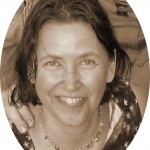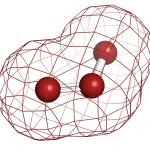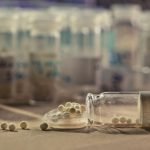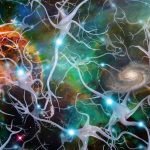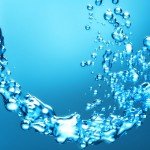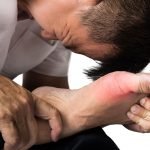The Drug Curse: Playing with Symptoms Instead of Removing the Cause of Disease
Sussanna Czeranko ND, BBE
Drugs are a method of playing with symptoms instead of removing the cause of disease.
-Benedict Lust, 1922b, p. 265The overwhelming trouble with people is that they trust too much to the doctor and his drugs.
-S. T. Erieg, 1904, p. 106The man who pretends to heal by means of drugs or surgery does not possess even rudimentary knowledge of the nature and cure of disease.
-August R. Reinhold, 1923, p. 579
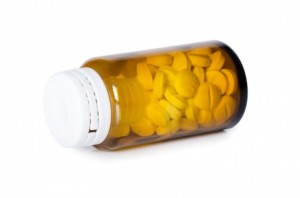 Medicine today, whether practiced by the MD or the ND, places a lot of trust in the medicines and remedies used to facilitate healing. Each side has its own medicaments to alleviate disease. Each side has an elaborate system of theories about those medicaments to justify their implementation. For their part, the early NDs placed at the center of their philosophy the laws of nature to guide judgments in patient care. Especially after the success of Flexner’s report and the dramatic enormous support by the General Education Fund (Carnegie and Rockefeller foundations) to proliferate experimental science and biomedicine as the basis for primary care, reverence for the healing power of nature was virtually ignored by the other side, allopathic biomedicine. The naturopathic profession persisted in its contention that how people lived and the habits that they lived by had a big influence on the quality of health or the presence of disease. In their view, people did not get sick because of “some error of Nature” (Notsew, 1923, p. 536), but rather sickness was a result of transgressing the laws of nature. This philosophy differed greatly from, for example, the allopathic germ theory that there was always a serum or vaccine to “make man immune against Nature’s mistakes” (Notsew, 1923, p. 536).
Medicine today, whether practiced by the MD or the ND, places a lot of trust in the medicines and remedies used to facilitate healing. Each side has its own medicaments to alleviate disease. Each side has an elaborate system of theories about those medicaments to justify their implementation. For their part, the early NDs placed at the center of their philosophy the laws of nature to guide judgments in patient care. Especially after the success of Flexner’s report and the dramatic enormous support by the General Education Fund (Carnegie and Rockefeller foundations) to proliferate experimental science and biomedicine as the basis for primary care, reverence for the healing power of nature was virtually ignored by the other side, allopathic biomedicine. The naturopathic profession persisted in its contention that how people lived and the habits that they lived by had a big influence on the quality of health or the presence of disease. In their view, people did not get sick because of “some error of Nature” (Notsew, 1923, p. 536), but rather sickness was a result of transgressing the laws of nature. This philosophy differed greatly from, for example, the allopathic germ theory that there was always a serum or vaccine to “make man immune against Nature’s mistakes” (Notsew, 1923, p. 536).
That the early NDs placed nature front and center is well known and is a cornerstone of naturopathic philosophy and practice to this day. Unfortunately, “civilized man is not attentive to the voice of Nature; in his various vicissitudes of living he surrounds himself with conditions that engender and foster the many ailments to which civilized man is addicted” (Erieg, 1904, p. 106). Benedict Lust expounded further:
[P]eople believe that they can indulge in all kinds of vicious habits, even to the extent of bringing themselves to the very brink of the grave and then by simply swallowing a pill, or potion, or get inoculated with a deadly serum or vaccine, get their organism restored to perfect health. (1922b, p. 265)
As we know, the early NDs believed that disease was clearly connected to improper living:
By a little thoughtful reasoning it will be seen that, barring trouble due to accident, no matter what the long scientific name of a so-called disease may be, it can always be traced to this one primary source—internal filth. (Elfrink, 1905, p. 223)
Excess and poorly selected food compromised the digestive functions, “resulting in putrefactive changes going on . . . and are absorbed into system[s], taken up by the blood and carried to the tissues, setting up derangements that vary all the way from simple headache to fatal ‘apoplexy’ or ‘heart failure’” (Latson, 1902, p. 203).
How attractive, then, was the allopathic invitation to remedy faulty lifestyle habits with the quick fixes that pills and pharmaceutical concoctions promised. At the turn of the century, Friedrich Bilz cautioned that “although suffers may believe, with all the assurance of entire conviction, that this or that medicine or nostrum has cured them, I must tell them quite plainly that they deceive themselves” (1901, p. 220). Clymer added his warnings:
Under a misplaced confidence in the fads of medicine, persons are often induced to inoculate themselves or their children . . . with the hope that in some mysterious manner they may be protected against small-pox. Thus, voluntarily contracting one disease in the false hope that they may possibly escape another, which they would never contract should they closely observe the laws of health. (1902, p. 161)
Notwithstanding such admonitions, people were seduced by the lure of “magic bullet” pills and other pharmaceuticals, whether by prescription or over the counter. To counter the drug movement, the early NDs put their efforts “to rout the ‘drug curse’ and substitute ‘Nature’s plain methods’” (Foote, 1902, p. 446).
One striking example of the early NDs relying on nature’s methods occurred during the pandemic of the Spanish flu that shook the world in 1918 (Czeranko, 2009,
p. 20). Estimates suggest that 35 to 50 million people worldwide perished from the flu. Significantly, those in the United States who found help with an ND recovered and thrived. The NDs advised against the allopathic treatments used by the regulars, and instead of recommending abundant food and Dover’s powder (a preparation of ipecac and opium) or quinine, castor oil, digitalis, morphine, and aspirin, the NDs administered “plenty of fresh air, absolutely no food except fruit juices, cool sponge baths and alternate full sheet packs and trunk packs” (Havard, 1918, p. 865). Unlike their MD counterparts, the NDs in America fared well when treating their patients with flu during this period. Their “losses were less than 1% of the cases treated” (Lust, 1919, p. 530).
However, the pill culture was a profitable business, convenient and seamless. Erieg, among others, was outraged:
[T]he amount of medicine swallowed by the American people every year for dyspepsia is something appalling. Why spend all this money and get no good results? Why not give the stomach a vacation, and then eat only those things that will agree with the stomach. Using the stomach for a slop pail will destroy the best stomach. (1904, p. 107)
Another contemporary spoke out against the pill-pushing habits of allopathic medicine:
Instead of applying the common sense and health restoring methods of Natural, Drugless Healing, official medicine insists upon the most barbarous drug medication, and after that failing it will apply destructive surgery, incapacitating, maiming and mutilating you for the rest of your life. (Erz, 1914, p. 584)
According to NDs, drugs complicated the exacerbation of morbid matter in the body. Under the influence of drugs, the body was unable to rely on its natural mechanisms of removing morbid matter: “The pharmaceutical treatment not only left the old morbid matter in the system, but introduced new one[s] into it with the drugs” (Bilz, 1901, p. 220).
Around the same time, Elfrink cautioned that problems inevitably arise when drugs are used to remove the symptoms of disease of wrongful and unnatural living: the early NDs worried that drugs “antagonize the natural forces of the body and that means that much vital force was exhausted in getting rid of the intruder” (1905, p. 223). Drugs diminished the vitality of the patient, and once the vitality was lost, it was extremely difficult to regain, if ever: “The effect of drugging is to injure and destroy the life forces and the integrity of the various organs” (Notsew, 1923, p. 533). Erz took these concerns even further; he contended:
[E]very drug has a secondary effect as well as a primary one. For example, the secondary effect of most of the coal-tar headache powders is to reduce the number of red blood corpuscles whose business it is to carry oxygen to all parts of the body. (1914, p. 577)
To this day, questions abound in the public and professional debate about drugs. For example, “do these medicines take the place of right living, of right thinking? [D]o they increase the vitality, the resistance?” (Ferri, 1921, p. 123).
When drugs elicited the desired effect, such as alleviation of symptoms, the early NDs did not for a moment succumb to the delusion that the drugs had generated a lasting positive outcome. As Notsew explained, “When the patient seems better, it is because the vital action has been rendered inactive by drugs. Drugs tend to benumb and paralyze the nervous system, so that action is either greatly deranged or suppressed” (1923, p. 533). Bilz considered “all foreign, irritating, or poisonous matter—as medicine, powders, etc.—which gets into the system, immediately excites the efforts of the natural excretory apparatus to get rid of them—hence the vomiting, purging action of the bowels, perspiration, etc” (1901, p. 221).
What may have worried the early NDs most was that, when the body could not rally against the poisons of drugs, weakness and disease were the results. In the opinion of Lust, the drugs or “poisons are so antagonistic to the human organism, that they cannot be administered for any length of time with impunity” (1922b, p. 266). One example of a common allopathic drug in wide use at the time was calomel. Its use came with many complications, as outlined by Dr. Notsew:
Mercury, in the form of calomel, for instance, is the regular liver remedy. It is administered to ‘stir up the liver’ . . . . The liver is aroused to violent activity in order to throw off the calomel before it has time to do much harm. It is not the calomel that moves the liver, but the liver that moves the calomel, and at great expense to the gland. (1923, p. 532)
The adverse effects of drugs like calomel led Elfrink to declare, “Drugs are things which have no place in the vital economy. They are alien” (1905, p. 223). He insisted:
Will a dose of calomel help a man to see the error of indulgence in ‘paté de fois gras’? No, indeed, it may cause an unnatural activity of his intestinal excretory functions and so enable him to escape the first penalty of his wrong in part, thus even encouraging him to go back to his dish of filthy excreta and to a prolonging of his wrong doing. (Elfrink, 1905, p. 223)
The drug, these NDs knew, merely removes the initial symptoms and adds one more burden on the body to eliminate.
The early MDs, on the other hand, proselytized their own pharmaceuticals as essential and safe at all times: “The burdens of useless and harmful things which have come down to us from the past is the notion that drugs are the one thing above all others essential in the treatment of disease” (Elfrink, 1905, p. 222). Lust weighed in:
The delusion that health can be restored by swallowing drugs is so widely spread that one doubts the sanity of people who spend large amounts of money for medicines, inasmuch as their experience gives them usually, if not always, unsatisfactory and often fatal results. The whole tendency of popular pharmacy has been in the direction of introducing to the public a great variety of powerful medicines put up in convenient form and advertised in such a manner as to produce in the unthinking a belief that they may be safely and rightly administered at all times and seasons for some real or supposed malady. (1922a, p. 5)
Lust blamed the medical profession for deceiving the public into believing that drugs were the answer and for not educating their patients to keep themselves in health. Often, Lust and others challenged the use of quick drug fixes to deal with painful chronic conditions, focusing on symptom relief, rather than on seriously treating the cause. One such example was Lust’s declaration that gout and rheumatism were caused by excessive eating of meat and starchy foods, resulting in uric acid (1922a, p. 5).
Over and over, Lust would refocus his patients on benefiting from a healthy lifestyle, rather than their succumbing to repressing symptoms as an objective. We are reminded of the rhetoric of the early NDs, including familiar admonitions that “over-eating, the lack of exercise, the excessive use of tobacco, excessive eating of meat and starchy foods” were causes that needed attention and action and required necessary lifestyle changes or health (Lust, 1922a, p. 5). Lust saw that without helping patients adopt healthy ways of living, “dis-ease” was inevitable. He reminded us that “when we consider that seventy five percent of the people dig their graves with their teeth, we must recognize that the doctor is not the only one who poisons us” (Lust, 1922b, p. 267).
To illustrate the irony of how history cycles back on itself, Notsew made a statement in 1923 that rings true today that MDs “are beginning to wail because people are losing faith in medical methods” (p. 534). Dr. C. J. Whalen, an MD who was alarmed that the drugless therapists and NDs were barging into the financial territory of the MDs, stated that “competition is becoming sharp, and the effect of this competition is reducing the remuneration of the medical men” (Notsew, 1923, p. 534). Whalen continued: “[A] score of cults [drugless therapists] are thriving, partly because they offer the sufferer a new hope, which the old schools have been unable to supply” (Notsew, 1923, p. 534).
By 1914, prescription drug abuse was mounting, and it was estimated that “25% of America’s drug addicts learned their vice in a doctor’s office” (Erz, 1914, p. 577). Even so, despite their being the agents of this dramatic shift to medicalizing everything and creating a culture of medications as a primary healthcare strategy, the American Medical Association strove to become and succeeded in establishing itself as “legally recognized and protected by the state” (Erz, 1914, p. 573). The biomedicine MDs reigned over the official medical system by the beginning of World War II. Today, Americans are renowned for being the largest consumers of drugs, both legal and illegal. Despite strict antidrug laws, Americans have earned the questionable distinction of having the highest level of illegal drug use in the world (Wolters, 2008; World Health Organization, 2004). Another shocking statistic is that, less than a generation ago, Americans in 1976 consumed 18.4% of the world’s pharmaceuticals but by 2000 that use had increased to 52.9% of world consumption, seconded only by Japan at 18.2%(World Health Organization, 2004). The top 10 high-income countries in the world consume 98.7% of all pharmaceuticals, leaving only a fraction for low-income countries (World Health Organization, 2004). As we can see, drugs have been an important part of the message of the allopathic pioneers, and they have been successful in convincing their fellow countrymen to embrace the drug path to presumed good health.
Sussanna Czeranko, ND, BBE is the curator of the rare book collection at NCNM in Portland, Oregon. She is currently compiling an eight-volume series on nature-cure topics for the profession. She is also an adjunct faculty member of the Transformative Voice Institute in Portland, the founder of the Breathing Academy, and a founding board member of the Buteyko Breathing Educators Association. She is a licensed naturopathic doctor in Ontario and in Oregon, and a graduate of CCNM. She has been in practice since 1994, incorporating nature-cure modalities and tools into her practice with great success.
Reference
- Bilz, F. E. (1901). The danger of medicine on account of the poison it contains. The Kneipp Water Cure Monthly, 2(8), 220-227.
- Clymer, R. S. (1902). The vaccination curse. The Naturopath and Herald of Health, 3(4), 161.
- Czeranko, S. C. (2009). The Spanish lady of 1918. Naturopathic Doctor News & Review, 5(12), 20.
- Elfrink, W. E. (1905). The absurdity of using drugs. The Naturopath and Herald of Health, 6(8), 222-223.
- Erieg, S. T. (1904). Nature versus drugs. The Naturopath and Herald of Health, 4(5), 106-107.
- Erz, A. A. (1921). Official medicine: as it is and what it is not. The Naturopath and Herald of Health, 19(9), 573-604.
- Ferri, N. A. (1921). Drugs and medicinal substances: All waste. The Herald of Health and Naturopath, 26(3), 120-124.
- Foote, E. B. (1902). The drug curse. The Naturopath and Herald of Health, 3(11), 446-448.
- Havard, W. F. (1918). Editorial: Influenza. Herald of Health and Naturopath, 23(11), 865-867.
- Latson, W. R. C. (1902). Cause of weakness. The Naturopath and Herald of Health, 3(5), 202-207.
- Lust, B. (1919). The flu again: Don’t be afraid. Herald of Health and Naturopath, 24(11), 530.
- Lust, B. (1922a). Medicines. Herald of Health and Naturopath, 27(1), 5-6.
- Lust, B. (1922b). The failure of the drugging system. Herald of Health and Naturopath, 27(6), 265-267.
- Lust, B. (1923). Fallacy of drugs [epigraph by A. R. Reinhold]. Herald of Health and Naturopath, 28(10), 579.
- Notsew, T. (1923). The truth as to drugs and medical science. The Naturopath and Herald of Health, 28(10), 531-540.
- Wolters, C. (2008, July 1). U.S. leads the world In illegal drug use. CBS News. Retrieved February 11, 2009, from http://www.cbsnews.com/stories/2008/07/01/health/webmd/main4222322.shtml
- World Health Organization. (2004). The world medicines situation. Retrieved October 14, 2011, from http://apps.who.int/medicinedocs/en/d/Js6160e/6.html#Js6160e.6



